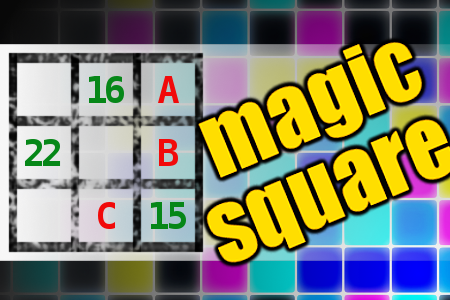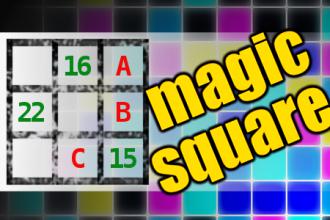MAGIC SQUARE: Calculate A*B+C
The aim is to place the some numbers from the list (15, 16, 22, 24, 25, 31, 36, 37, 43, 61, 79) into the empty squares and squares marked with A, B an C. Sum of each row and column should be equal. All the numbers of the magic square must be different. Find values for A, B, and C. Solution is A*B+C.Correct answers: 18
The first user who solved this task is Nílton Corrêa de Sousa.
#brainteasers #math #magicsquare

At a wine merchant's warehous...
At a wine merchant's warehouse the regular taster died, and the director started looking for a new one to hire. A drunk with a ragged dirty look came to apply for the position. The director wondered how to send him away.
They gave him a glass to drink. The old drunk tried it and said, "It's a Muscat three years old, grown on a north slope, matured in steel containers. Low grade but acceptable."
"That's correct", said the boss. "Another glass, please."
"It's a Cabernet, eight years old, south-western slope, oak barrels, matured at eight degrees. Requires three more years for finest results."
"Absolutely correct. A third glass."
"It's a Pinot Blanc champagne, high grade and exclusive," calmly said the drunk.
The director was astonished and winked at his secretary to suggest something. She left the room and came back in with a glass of urine.
The alcoholic tried it. "It's a blonde, 26 years old, three months pregnant, and if I don't get the job, I'll name the father."
They gave him a glass to drink. The old drunk tried it and said, "It's a Muscat three years old, grown on a north slope, matured in steel containers. Low grade but acceptable."
"That's correct", said the boss. "Another glass, please."
"It's a Cabernet, eight years old, south-western slope, oak barrels, matured at eight degrees. Requires three more years for finest results."
"Absolutely correct. A third glass."
"It's a Pinot Blanc champagne, high grade and exclusive," calmly said the drunk.
The director was astonished and winked at his secretary to suggest something. She left the room and came back in with a glass of urine.
The alcoholic tried it. "It's a blonde, 26 years old, three months pregnant, and if I don't get the job, I'll name the father."

